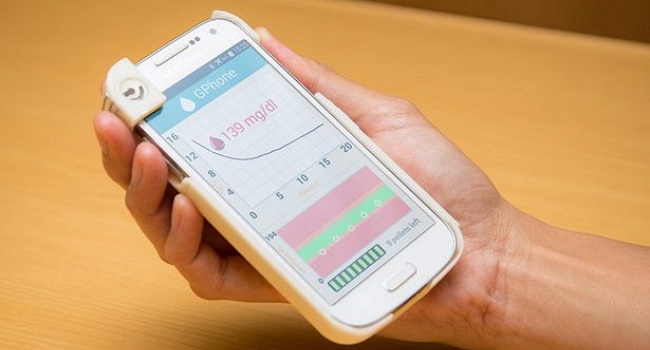- Latest news▼
-
12:16, April 19 Scientists grow human mini-lungs in lab

-
10:23, April 19 JAMA Oncology: Urine test can help rule out high-grade prostate cancer with almost 100% accuracy, study shows

-
18:00, April 18 Daily Mail: Elderly woman in China gets infected with brain-eating amoeba

-
14:19, April 18 Obesity: exercising before breakfast helps you lose weight faster

-
10:42, April 18 The Conversation: childhood trauma can cause pathological hoarding

-
08:37, April 18 Daily Mail: Satiating food reduces cravings for sweets, nutritionist says

-
18:22, April 17 First Armenian-German Conference entitled “Heart Failure Spring School”

-
08:38, April 17 Why do kids usually recover from COVID-19 more easily than adults?

-
14:37, April 16 Daily Mail: intermittent fasting is not suitable for children and women before their periods

-
16:41, April 15 Cell: in carriers of defective BRCA2 gene, sugar consumption increases cancer risk

-
15:04, April 15 305 cases of measles recorded in Armenia so far in 2024

-
14:38, April 15 Food and Environmental Virology: tea contributes to effective coronavirus control

-
12:41, April 15 Daily Mail: vitamin A, B3 and E supplements can be dangerous

-
10:56, April 15 Diabetes Care: evening physical activity is good for the heart

-
08:27, April 15 Women are more susceptible to blood loss and death during bypass surgery than men, researchers say

All materials
Smartphone case offers blood glucose monitoring on the go

Engineers at the University of California San Diego have developed a smartphone case and app that could make it easier for patients to record and track their blood glucose readings, whether they’re at home or on the go.
Currently, checking blood sugar levels can be a hassle for people with diabetes, especially when they have to pack their glucose monitoring kits around with them every time they leave the house.
“Integrating blood glucose sensing into a smartphone would eliminate the need for patients to carry a separate device,” said Patrick Mercier, a professor of electrical and computer engineering at UC San Diego. “An added benefit is the ability to autonomously store, process and send blood glucose readings from the phone to a care provider or cloud service.”
The device, called GPhone, is a new proof-of-concept portable glucose sensing system developed by Mercier, nanoengineering professor Joseph Wang, and their colleagues at the UC San Diego Jacobs School of Engineering. Wang and Mercier are the director and co-director, respectively, of the Center for Wearable Sensors at UC San Diego. Their team published the work in Biosensors and Bioelectronics.
GPhone has two main parts. One is a slim, 3D printed case that fits over a smartphone and has a permanent, reusable sensor on one corner. The second part consists of small, one-time use, enzyme-packed pellets that magnetically attach to the sensor. The pellets are housed inside a 3D printed stylus attached to the side of the smartphone case.
To run a test, the user would first take the stylus and dispense a pellet onto the sensor—this step activates the sensor. The user would then drop a blood sample on top. The sensor measures the blood glucose concentration, then wirelessly transmits the data via Bluetooth to a custom-designed Android app that displays the numbers on the smartphone screen. The test takes about 20 seconds. Afterwards, the used pellet is discarded, deactivating the sensor until the next test. The stylus holds enough pellets for 30 tests before it needs to be refilled. A printed circuit board enables the whole system to run off a smartphone battery.
The pellets contain an enzyme called glucose oxidase that reacts with glucose. This reaction generates an electrical signal that can be measured by the sensor’s electrodes. The greater the signal, the higher the glucose concentration. The team tested the system on different solutions of known glucose concentrations. The results were accurate throughout multiple tests.
Follow NEWS.am Medicine on Facebook and Twitter
- Video
- Event calendar
- Archive
- Most read
month
week
day
- WHO: Nigeria pioneers revolutionary meningitis vaccine 1190
- One-third of women experience menstruation-related migraines, most often during premenopause - study 1188
- Daily Mail: vitamin A, B3 and E supplements can be dangerous 1085
- Food and Environmental Virology: tea contributes to effective coronavirus control 1077
- Cell: in carriers of defective BRCA2 gene, sugar consumption increases cancer risk 1048
- 305 cases of measles recorded in Armenia so far in 2024 1042
- Women are more susceptible to blood loss and death during bypass surgery than men, researchers say 974
- Diabetes Care: evening physical activity is good for the heart 929
- Daily Mail: intermittent fasting is not suitable for children and women before their periods 872
- First Armenian-German Conference entitled “Heart Failure Spring School” 641
- Obesity: exercising before breakfast helps you lose weight faster 541
- Why do kids usually recover from COVID-19 more easily than adults? 540
- Daily Mail: Elderly woman in China gets infected with brain-eating amoeba 531
- The Conversation: childhood trauma can cause pathological hoarding 530
- Daily Mail: Satiating food reduces cravings for sweets, nutritionist says 503
- Find us on Facebook
- Poll





